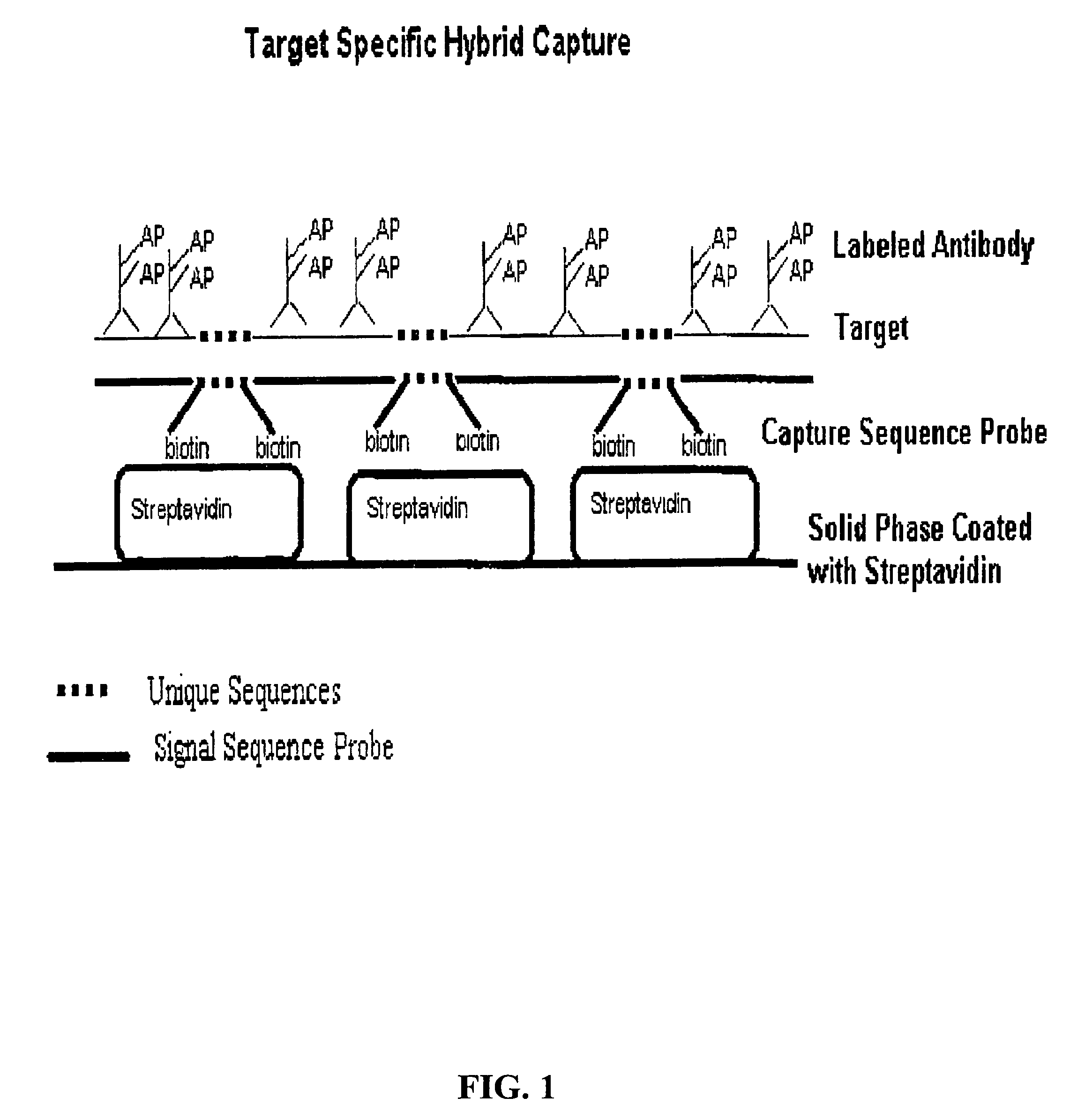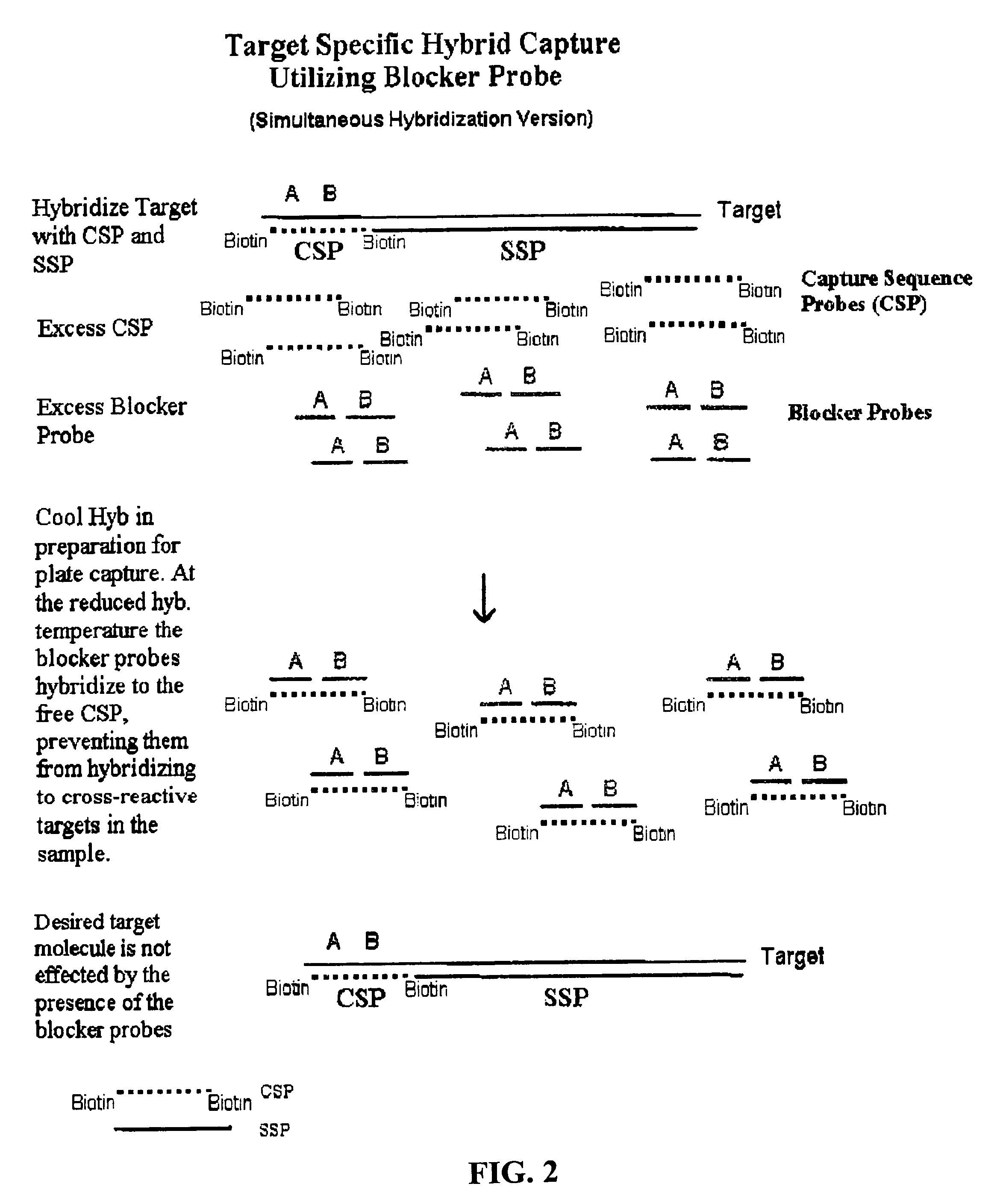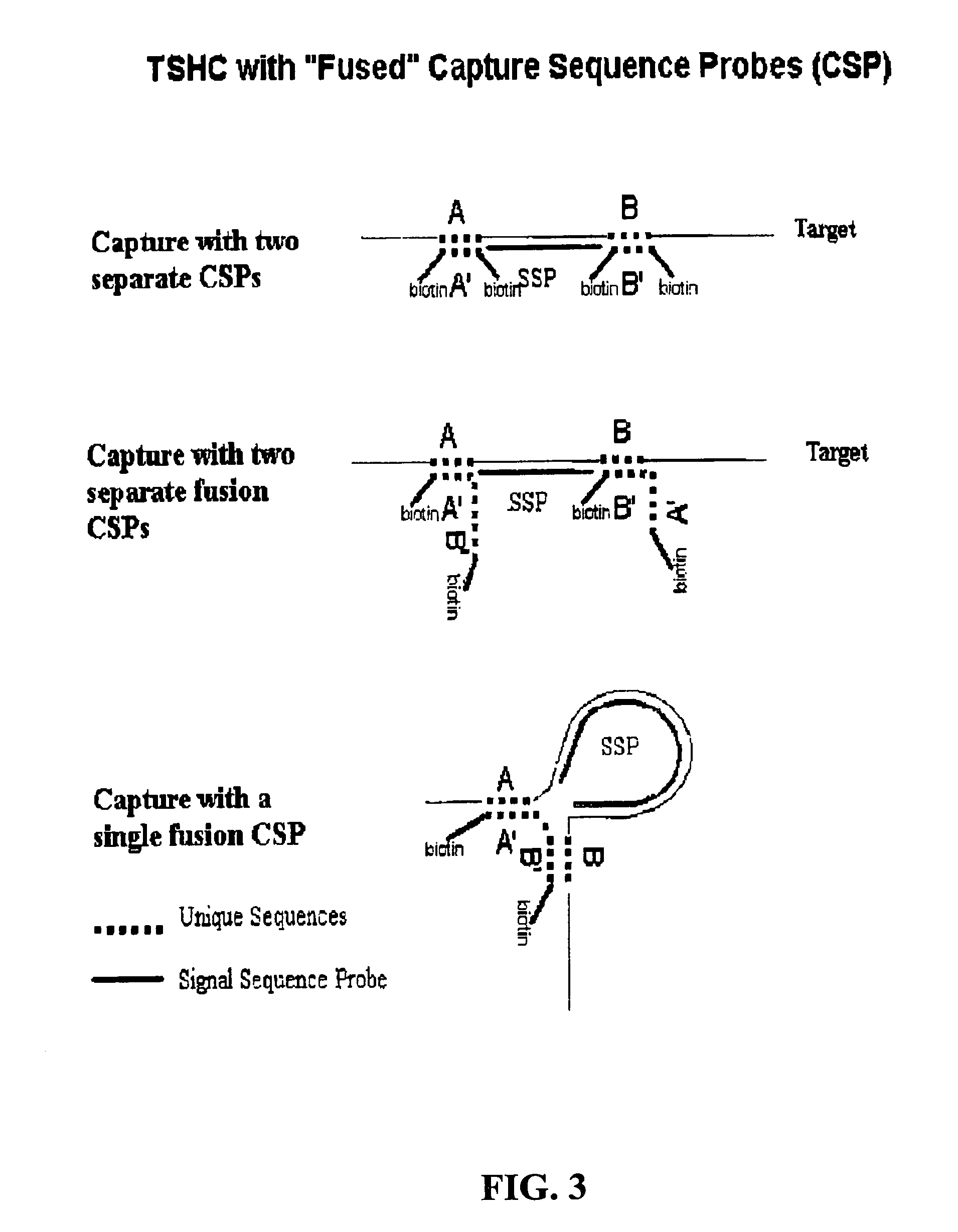Detection of nucleic acids by type-specific hybrid capture method
- Summary
- Abstract
- Description
- Claims
- Application Information
AI Technical Summary
Benefits of technology
Problems solved by technology
Method used
Image
Examples
example 1
Target-Specific Hybrid Capture (TSHC) Assay Protocol
[0048]Herpes Simplex Virus 1 (HSV-1) and Herpes Simplex Virus 2 (HSV-2) viral particles of known concentration (Advanced Biotechnologies, Inc., Columbia, Md.) or clinical samples were diluted using either Negative Control Media (Digene Corp., Gaithersburg, Md.) or Negative Cervical Specimens (Digene). Various dilutions were made and aliquoted into individual microfuge tubes. A half volume of the Denaturation Reagent 5100-0431 (Digene) was added. Test samples were incubated at 65° C. for 45 minutes for denaturation of nucleic acids in the samples.
[0049]Following denaturation, a hybridization solution containing signal sequence probes (SSPs) (600 ng / ml each) and capture sequence probes (CSPs) (2.5 pmoles / ml each) was added to the sample, and incubated at 74° C. for 1 hour. Blocker probes in a solution containing one volume of 4× Probe Diluent (Digene), one volume of Denaturation Reagent and two volumes of the Negative Control Media w...
example 2
[0055]The following tables describe the various probes used in experiments described in Examples 3-13.
[0056]
TABLE 1HSV-1 Clones from which HSV-1 Probes are derivedCloneHostCloningInsertSequence LocationNameVectorSite(s)Size (bp)within HSV-1RH3Dgx3Hind III,572039850-45570Eco RIR10BlueEco RI407264134-68206Script SK+RH5BBlueEco RV,4987105108-110095Script SK+Eco RIH19BlueHind III4890133467-138349Script SK+
[0057]
TABLE 2HSV-2 Clones from which HSV-2 Probes are derivedCloneHostCloningInsertSequence LocationNameVectorSite(s)Size (bp)in HSV-2E4ABlueBam HI368323230-26914Script SK+E4BBlueBam HI560026914-32267Script SK+Eco RII8BlueHind III284441624-44474Script SK+EI8Dgx3Hind III,371544474-48189Eco RI4LBlueBam HI,431386199-90512Script SK+Eco RI
[0058]
TABLE 3Capture Sequence Probes for HSV-1SizeLocation withinProbeSequence(bp)HSV-1TS-1(TTATTATTA)CGTTCATGTCGGCAAACAGCT24105040-105063CGT(TTATTATTA) [SEQ ID NO:1]TS-2(TTATTATTA)CGTCCTGGATGGCGATACGGC21110316-110336(TTATTATTA) [SEQ ID NO:2]VH-3CGTCCTGGAT...
example 3
Effect of the Extent of Biotin Labeling on Capture Efficiency
[0064]Tests were conducted to determine the optimal number of biotin labels per capture sequence probe for TSHC detection. The general TSHC method described in Example 1 was employed. The capture efficiency of capture sequence probe F15R labelled with one, two, or three biotins, measured by signal to noise ratio (S / N), were tested. The signal sequence probe employed was H19. As shown in Table 9, two biotins per capture sequence probe were sufficient for optimal capture efficiency. Greater than a 50% increase in S / N was observed using capture sequence probe with two biotin labels compared to the single biotin labeled capture sequence probe. The addition of a third biotin label to the capture sequence probe resulted in a decrease in S / N relative to the two-biotin labeled capture sequence probe.
[0065]
TABLE 9Effect of the Extent of Biotin Labeling on Capture Efficiency# BiotinsHSV-1 / wellRLUCVS / NOne0543%1.0One4.5 × 10{circumfle...
PUM
| Property | Measurement | Unit |
|---|---|---|
| Temperature | aaaaa | aaaaa |
| Temperature | aaaaa | aaaaa |
| Temperature | aaaaa | aaaaa |
Abstract
Description
Claims
Application Information
 Login to View More
Login to View More - R&D
- Intellectual Property
- Life Sciences
- Materials
- Tech Scout
- Unparalleled Data Quality
- Higher Quality Content
- 60% Fewer Hallucinations
Browse by: Latest US Patents, China's latest patents, Technical Efficacy Thesaurus, Application Domain, Technology Topic, Popular Technical Reports.
© 2025 PatSnap. All rights reserved.Legal|Privacy policy|Modern Slavery Act Transparency Statement|Sitemap|About US| Contact US: help@patsnap.com



